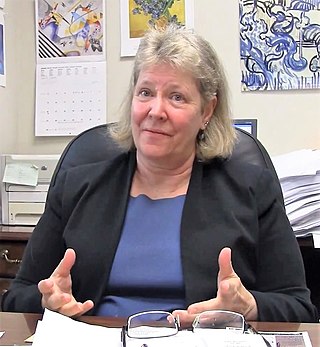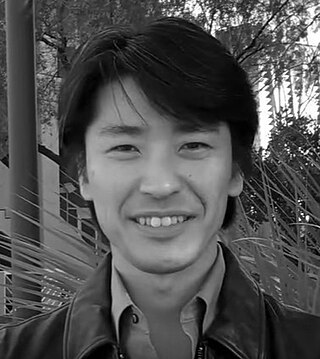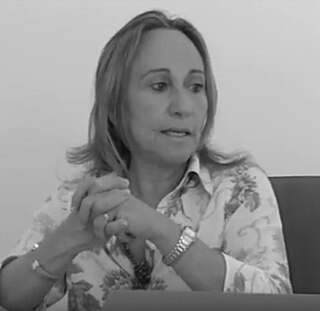
English as a second or foreign language is the use of English by speakers with different native languages, often with students whose native language is not English and are learning to speak and write English, commonly among students. Language education for people learning English may be known as English as a foreign language (EFL), English as a second language (ESL), English for speakers of other languages (ESOL), English as an additional language (EAL), or English as a new language (ENL), which refers to the practice of studying English in a country where it is not the dominant language. These programs, especially ESL, are usually an academic subject, course, or program designed to teach English to students who are not yet proficient in the language. While some people only refer to learning in an English-speaking country, learning this language can also entail learning in a non-English speaking or non-native nation.

Composition studies is the professional field of writing, research, and instruction, focusing especially on writing at the college level in the United States.
Cognitive science and linguistic theory have played an important role in providing empirical research into the writing process and serving the teaching of composition. As for composition theories, there is some dispute concerning the appropriateness of tying these two schools of thought together into one theory of composition. However, their empirical basis for research and ties to the process theory of composition and cognitive science can be thought to warrant some connection.
NNEST or non-native English-speaking teachers is an acronym that refers to the growing body of English language teachers who speak English as a foreign or second language. The term was coined to highlight the dichotomy between native English-speaking teachers (NEST) and non-native English-speaking teachers (NNEST).
In Language learning research, identity refers to the of personal orientation to time, space, and society, and the manner in which it develops together with, and because of speech development.
Peer feedback is a practice where feedback is given by one student to another. Peer feedback provides students opportunities to learn from each other. After students finish a writing assignment but before the assignment is handed in to the instructor for a grade, the students have to work together to check each other's work and give comments to the peer partner. Comments from peers are called as peer feedback. Peer feedback can be in the form of corrections, opinions, suggestions, or ideas to each other. Ideally, peer feedback is a two-way process in which one cooperates with the other.
A dialogue journal is an ongoing written interaction between two people to exchange experiences, ideas, knowledge or reflections. It is used most often in education as a means of sustained written interaction between students and teachers at all education levels. It can be used to promote second language learning and learning in all areas.
TESOL Quarterly is a quarterly peer-reviewed academic journal published by Wiley-Blackwell on behalf of TESOL International Association. It covers English language teaching and learning, standard English as a second dialect, including articles on the psychology and sociology of language learning and teaching, professional preparation, curriculum development, and testing and evaluation. The editors-in-chief are Charlene Polio and Peter De Costa, both at Michigan State University. TESOL also publishes TESOL Journal.

Kathleen Blake Yancey is the Kellogg W. Hunt Professor of English at Florida State University in the rhetoric and composition program. Her research interests include composition studies, writing knowledge, creative non-fiction, and writing assessment.
Vocabulary learning is the process acquiring building blocks in second language acquisition Restrepo Ramos (2015). The impact of vocabulary on proficiency in second language performance "has become […] an object of considerable interest among researchers, teachers, and materials developers". From being a "neglected aspect of language learning" vocabulary gained recognition in the literature and reclaimed its position in teaching. Educators shifted their attention from accuracy to fluency by moving from the Grammar translation method to communicative approaches to teaching. As a result, incidental vocabulary teaching and learning became one of the two major types of teaching programs along with the deliberate approach.

Marjolijn Verspoor is a Dutch linguist. She is a professor of English language and English as a second language at the University of Groningen, Netherlands. She is known for her work on Complex Dynamic Systems Theory and the application of dynamical systems theory to study second language development. Her interest is also in second language writing.

Diane Larsen-Freeman is an American linguist. She is currently a Professor Emerita in Education and in Linguistics at the University of Michigan in Ann Arbor, Michigan. An applied linguist, known for her work in second language acquisition, English as a second or foreign language, language teaching methods, teacher education, and English grammar, she is renowned for her work on the complex/dynamic systems approach to second language development.

Cornelis Kees de Bot is a Dutch linguist. He is currently the chair of applied linguistics at the University of Groningen, Netherlands, and at the University of Pannonia. He is known for his work on second language development and the use of dynamical systems theory to study second language development.

Paul Kei Matsuda is a Japanese-born American applied linguist. He is currently a professor of English and the director of second language writing at Arizona State University He has published several articles and edited books on the areas of second language writing, composition studies, and cognitive and linguistic theories of composition.

Rosa María Manchón Ruiz is a Spanish linguist. She is currently a professor of applied linguistics at the University of Murcia, Spain. Her research focuses on second language acquisition and second language writing. She was the editor of the Journal of Second Language Writing between 2008 and 2014.
L2 Syntactical Complexity Analyzer (L2SCA) developed by Xiaofei Lu at the Pennsylvania State University, is a computational tool which produces syntactic complexity indices of written English language texts. Along with Coh-Metrix, the L2SCA is one of the most extensively used computational tool to compute indices of second language writing development. The L2SCA is also widely utilised in the field of corpus linguistics. The L2SCA is available in a single and a batch mode. The first provides the possibility of analyzing a single written text for 14 syntactic complexity indices. The latter allows the user to analyze 30 written texts simultaneously.
Scott Andrew Crossley is an American linguist. He is a professor of applied linguistics at Vanderbilt University, United States. His research focuses on natural language processing and the application of computational tools and machine learning algorithms in learning analytics including second language acquisition, second language writing, and readability. His main interest area is the development and use of natural language processing tools in assessing writing quality and text difficulty.
Alison Mackey is a linguist who specializes in applied linguistics, second language acquisition and research methodology. She is currently a professor in the Department of Linguistics at Georgetown University. Her research focuses on applied linguistics and research methods.
The Sydney School is a genre-based writing pedagogy that analyses literacy levels of students. The Sydney School's pedagogy broadened the traditional observation-based writing in primary schools to encompass a spectrum of different genres of text types that are appropriate to various discourses and include fiction and non-fiction. The method and practice of teaching established by the Sydney School encourages corrective and supportive feedback in the education of writing practices for students, particularly regarding second language students. The Sydney School works to reflectively institutionalise a pedagogy that is established to be conducive to students of lower socio-economic backgrounds, indigenous students and migrants lacking a strong English literacy basis. The functional linguists who designed the genre-based pedagogy of the Sydney School did so from a semantic perspective to teach through patterns of meaning and emphasised the importance of the acquisition of a holistic literacy in various text types or genres. ‘Sydney School’ is not, however, an entirely accurate moniker as the pedagogy has evolved beyond metropolitan Sydney universities to being adopted nationally and, by 2000, was exported to centres in Hong Kong, Singapore, and parts of Britain.
Jenny Hammond is an Australian linguist. She is known for her research on literacy development, classroom interaction, and socio-cultural and systemic functional theories of language and learning in English as an Additional Language or dialect (EAL/D) education. Over the course of her career, Hammond's research has had a significant impact on the literacy development of first and second language learners, on the role of classroom talk in constructing curriculum knowledge and on policy developments for EAL education in Australia. She is an Honorary Associate Professor in the School of Education, University of Technology Sydney.








